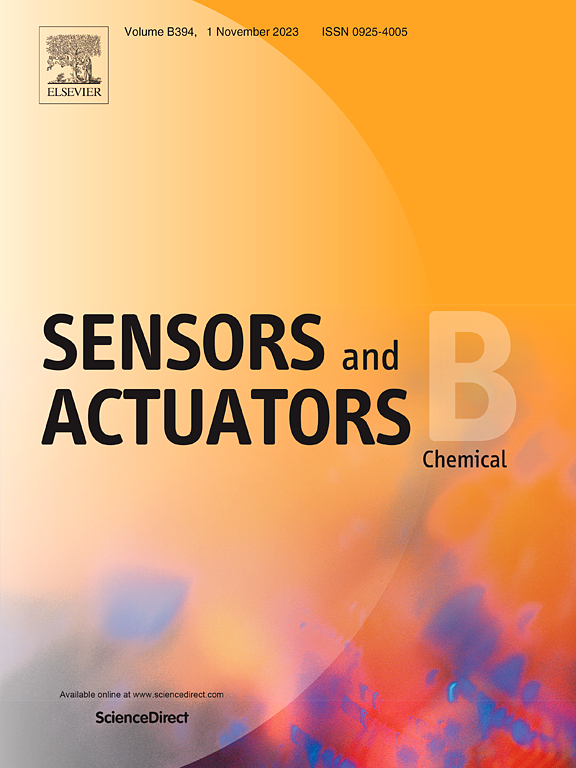低氧与黏度协同控制荧光探针用于早期低氧相关疾病的信号放大成像
IF 8
1区 化学
Q1 CHEMISTRY, ANALYTICAL
引用次数: 0
摘要
缺氧,即组织中氧含量下降的现象,是许多疾病的一个关键特征,并加剧了一些疾病的进展。同时,长时间缺氧可引起线粒体自噬,促进黏度。因此,荧光探针检测缺氧已被广泛报道。然而,大多数用于缺氧检测的荧光探针具有低信号放大。因此,我们开发了一种新型的受缺氧和粘度共同调节的荧光探针NF。该探针能够快速响应缺氧标志物硝基还原酶(NTR) (100 s),并能在粘度响应后进行信号放大。此外,NF是第一个检测到早期酒精性肝损伤小鼠缺氧(提前组织病理学分析)和早期类风湿关节炎缺氧的细胞。本文章由计算机程序翻译,如有差异,请以英文原文为准。

Hypoxia and viscosity Co-controlled fluorescence probe for signal amplification imaging of early hypoxia-related diseases
Hypoxia, the phenomenon of decline of oxygen levels in tissues, is a key feature of many diseases and exacerbates the progression of some. At the same time, prolonged hypoxia can cause mitochondrial autophagy and promote viscosity. Therefore, fluorescent probes for detecting hypoxia have been widely reported. However, most of the fluorescence probes used for hypoxia detection have low signal amplification. Therefore, we developed a novel fluorescence probe NF that is co-regulated by hypoxia and viscosity. The probe is capable of rapid response (100 s) with hypoxia marker nitroreductase (NTR) and is capable of signal amplification after viscosity response. Moreover, NF was the first to detect hypoxia in early alcoholic liver injury mice (predate histopathological analysis) and hypoxia in early rheumatoid arthritis.
求助全文
通过发布文献求助,成功后即可免费获取论文全文。
去求助
来源期刊

Sensors and Actuators B: Chemical
工程技术-电化学
CiteScore
14.60
自引率
11.90%
发文量
1776
审稿时长
3.2 months
期刊介绍:
Sensors & Actuators, B: Chemical is an international journal focused on the research and development of chemical transducers. It covers chemical sensors and biosensors, chemical actuators, and analytical microsystems. The journal is interdisciplinary, aiming to publish original works showcasing substantial advancements beyond the current state of the art in these fields, with practical applicability to solving meaningful analytical problems. Review articles are accepted by invitation from an Editor of the journal.
 求助内容:
求助内容: 应助结果提醒方式:
应助结果提醒方式:


